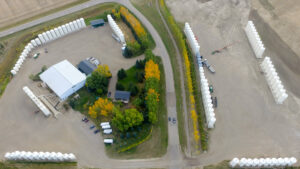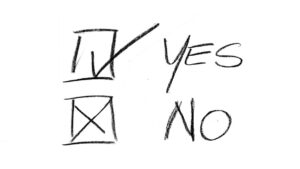Modern seed plants and their operators are benefitting from technology that is taking them well beyond the quality standards that have traditionally helped them to be successful.
That’s because the industry is setting the standards that ensure success in seed processing today — and that new way of doing business is catching on among savvy processors who want to be the go-to seed processors in their community.
In our previous two columns, we presented the first two courses in Seed Processing 101 — capacity and capability. As my colleagues Mark Metcalfe and Rod Cockerline explained, ensuring your plant has the right capacity and capability are key to being able to produce a quality product.
We all know that quality seed is important, but of course, quality means different things to different people. For years, the landscape was dotted with different types of plants built for different uses. Some plants simply cleaned seed for farmers. When a farmer is just trying to clean seed for themselves, they don’t have to hit any grades. As a result, many cleaning co-ops were in the past concentrated on how many bushels an hour can they could put through the system.
Things began to change when quality began to move beyond that and into the realm we see today, where seed needs to hit quality specifications for other uses, including food.
A customer recently told me, “I can’t believe the quality that we used to sell.” For years his plant would clean seed within the specifications for certified seed, and he was primarily concerned about capacity. Since their addition of an optical sorter, it was apparent to him how much better a product he could create, opening up new business opportunities.
They discovered the value of adopting a quality mindset, which has made all the difference. He’s not alone. The modern processing landscape is changing; adopting a quality mindset can help you in many ways:
It bolsters your reputation. Plants built with modern quality standards in mind are known as go-to sources for seed processing. Everyone knows who they are. Word spreads fast at the coffee shop in regard to who’s at the top of their game in processing. A lot of them are newer plants that have thought ahead, and they put every tool in the toolbox in their facility. Older plants with an air screen and a set of indents still serve a purpose, but as the industry changes, they get left behind if they don’t upgrade. That means losing business to more modern plants. If you want to be successful, you have to be the plant with a reputation for quality who can serve every kind of conceivable customer.
It makes you more money. One of my customers invested in a colour sorter. Of course, he needed to pay for it. He raised his prices a bit. When customers came in and found out about the rise in cost, he said, “Here’s the product we’ve been selling for years. Here’s the product I can sell you today. Just look at what the colour sorter took out. What would you rather have?” Nobody wanted the lower quality product once they saw all the stuff the colour sorter removed. He created a new standard above and beyond what the certified seed market required, and he made money off it.
It makes you more versatile. In his previous column, Rod Cockerline said the key to building a good plant is to build one that doesn’t ever require you to say no to a job. When we talk about next-level quality, I remind clients that they should leave space for whatever that next opportunity is or whatever other piece of equipment they might want to add, like a destoner. It could make all the difference when new opportunities come your way.
It helps you set a new standard. As I said above, modern tools allow you to exceed standards laid out in Canadian regulations. When you become known for creating the highest quality product in your region, that counts for something.
“Good enough” is no longer good enough when it comes to your seed plant. After capacity and capability, quality is the third piece of the puzzle that will lead you to success and ensure your operation prospers in the future.








